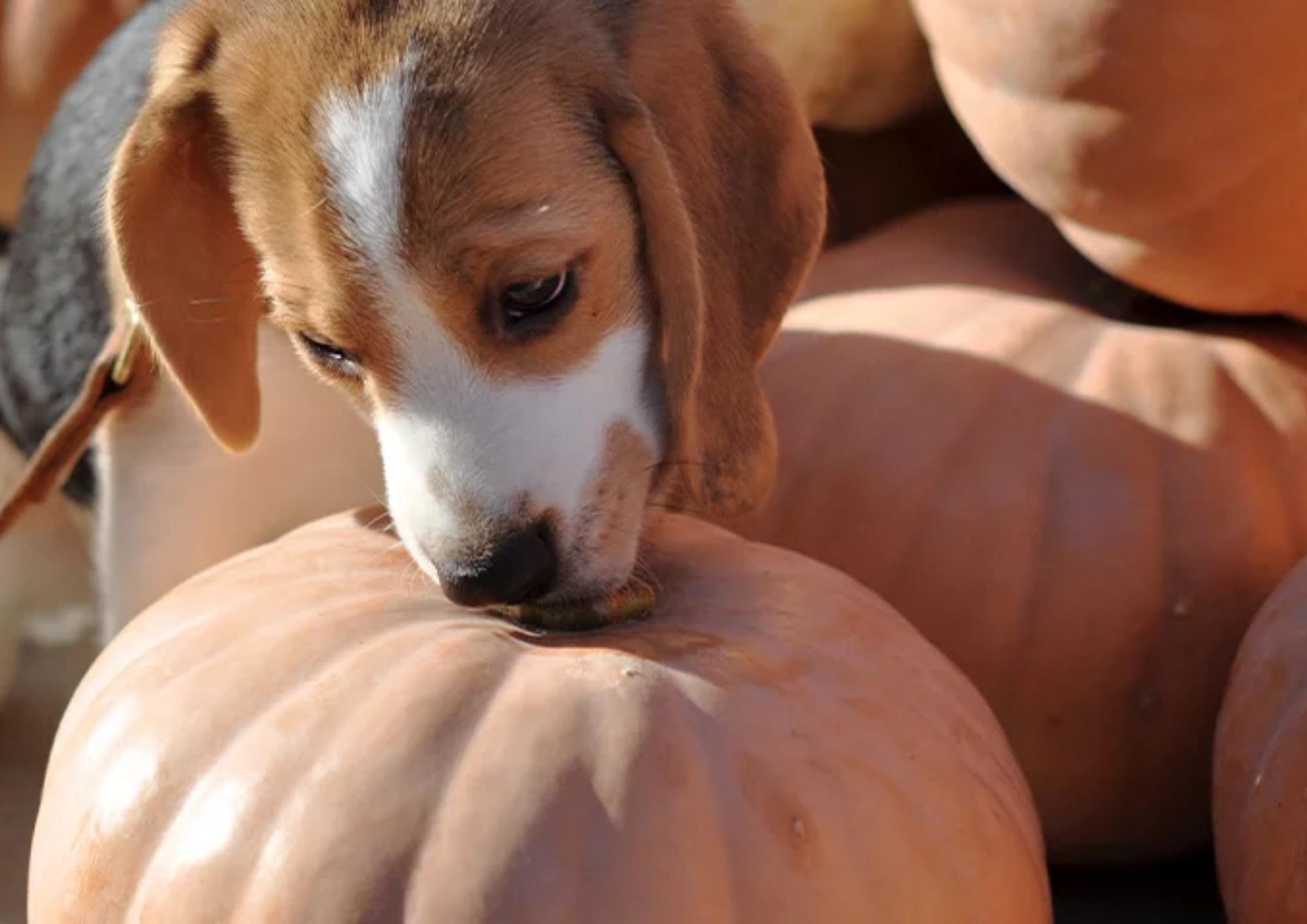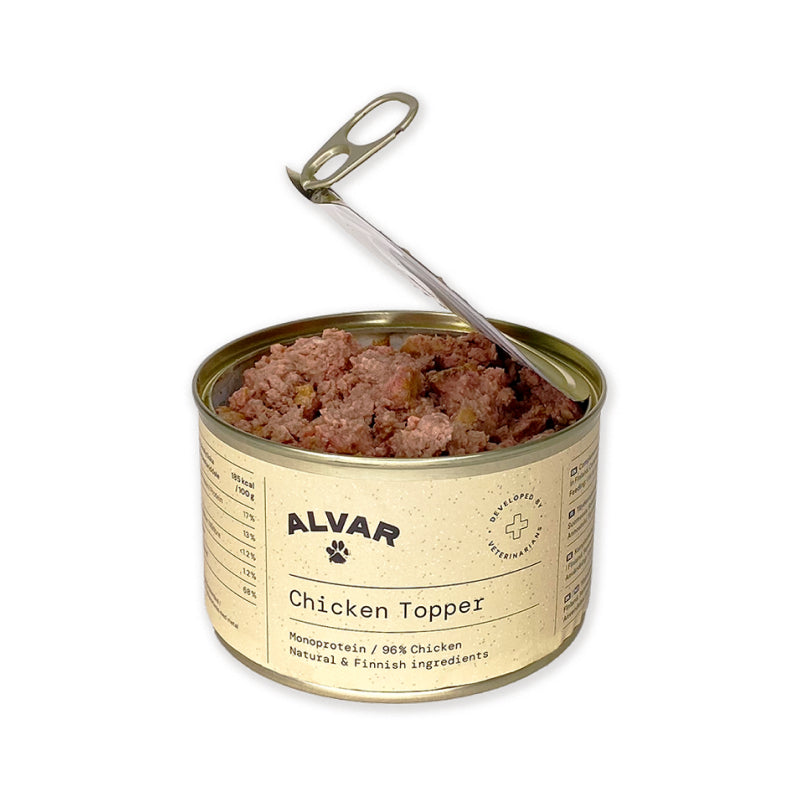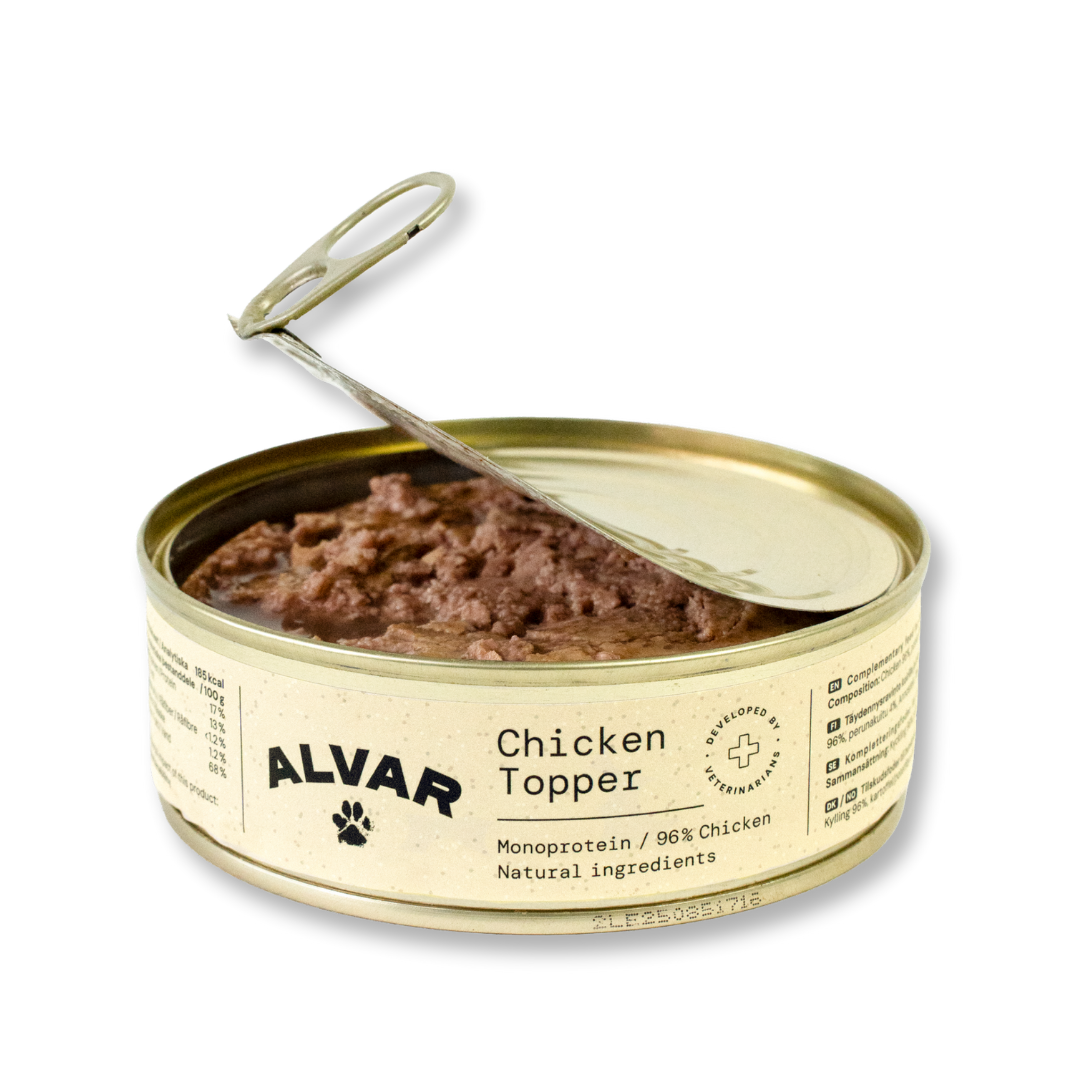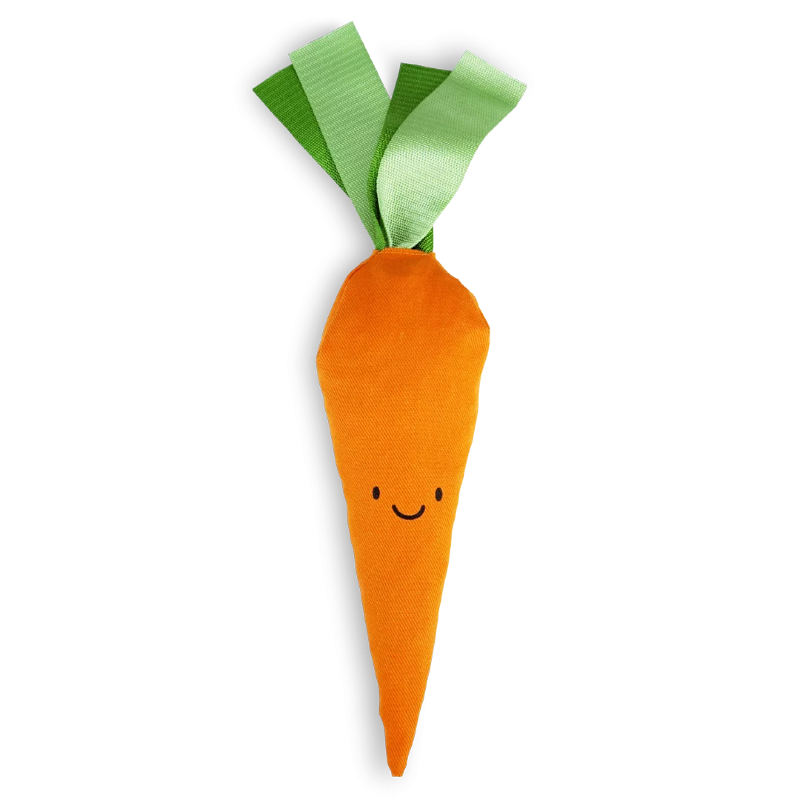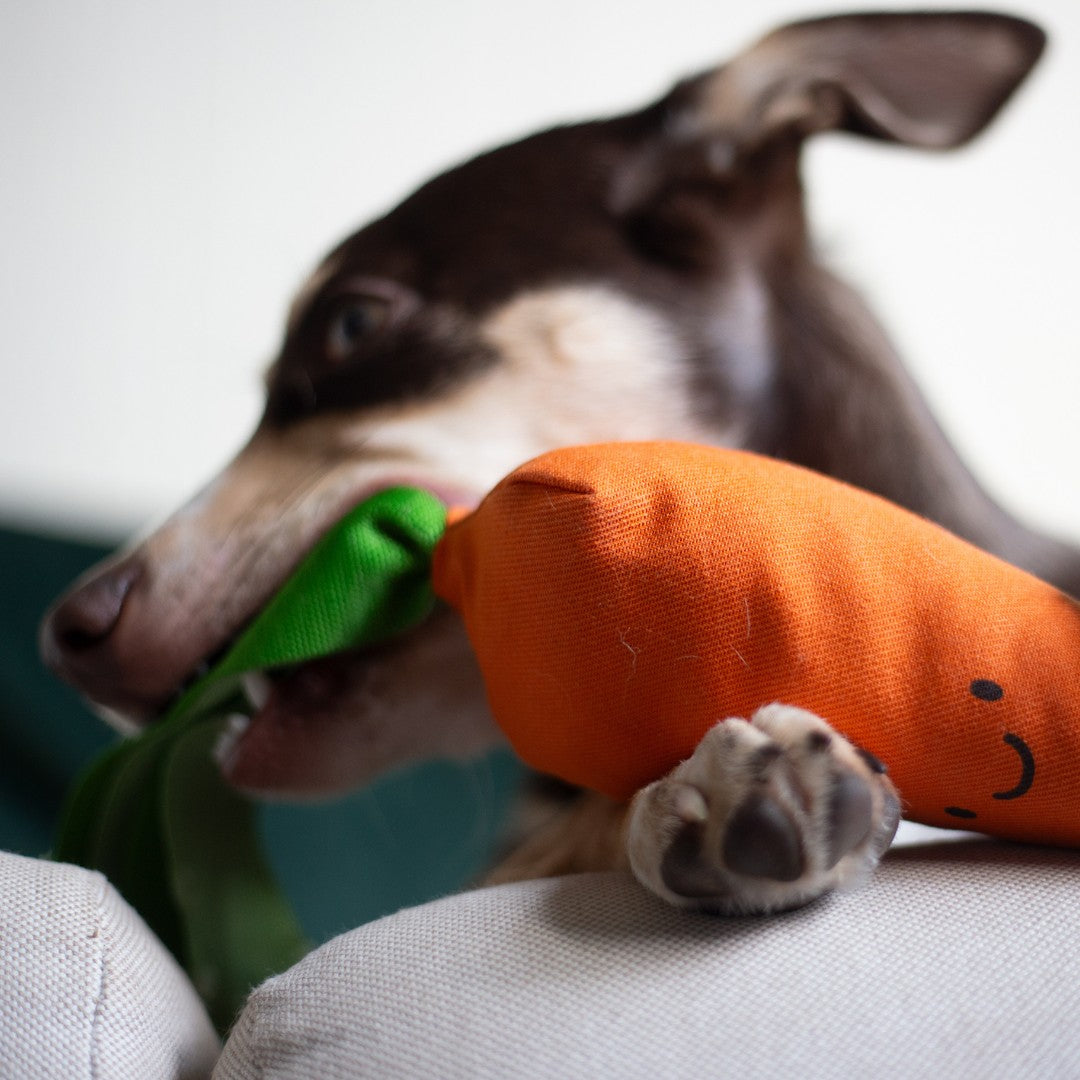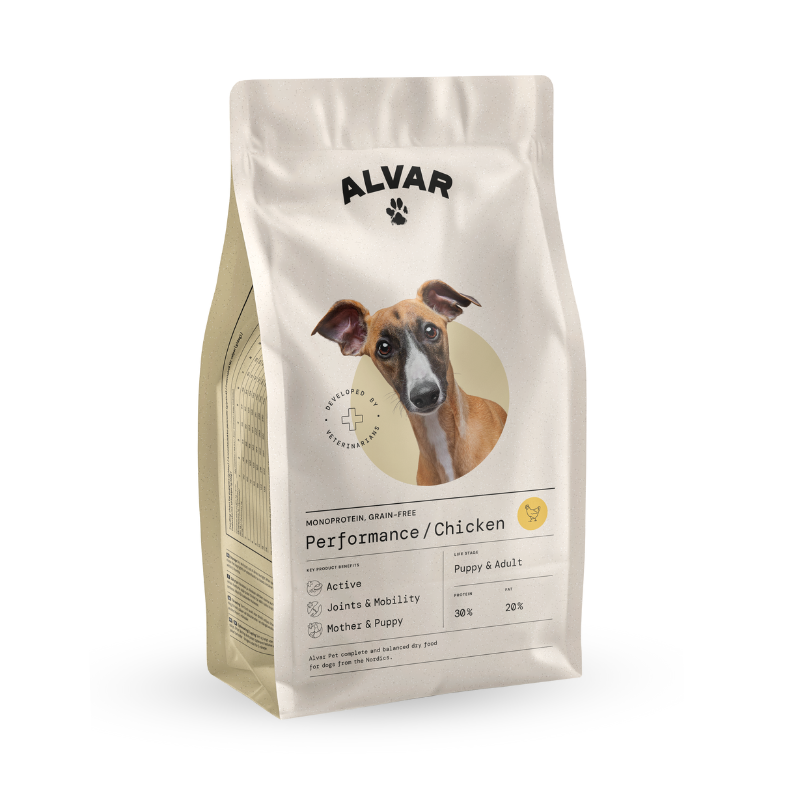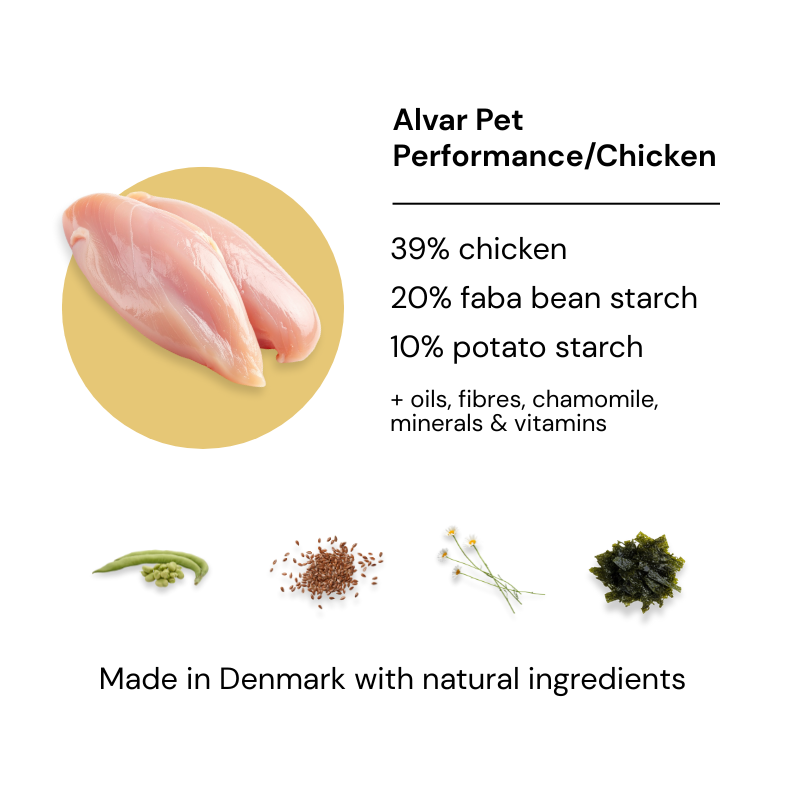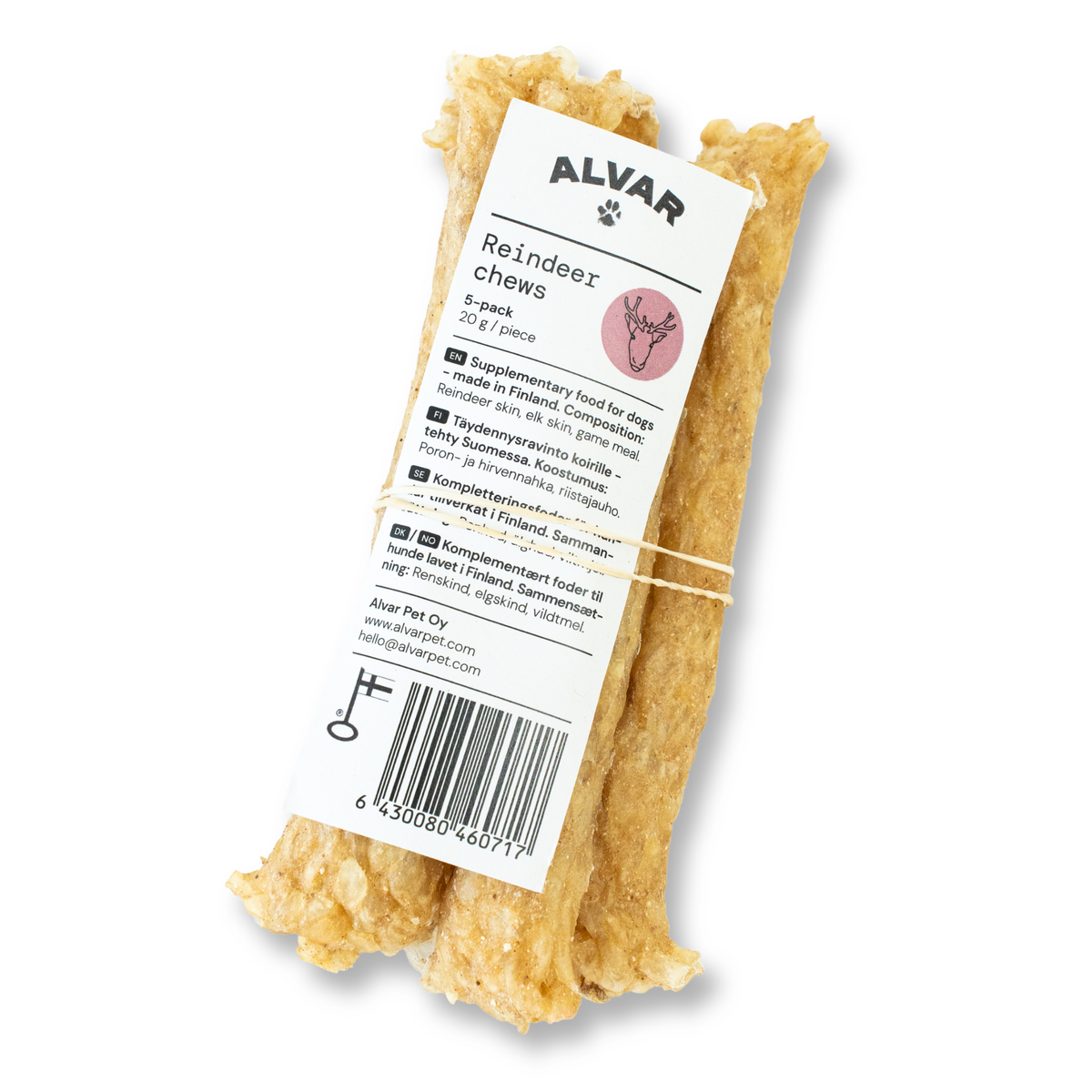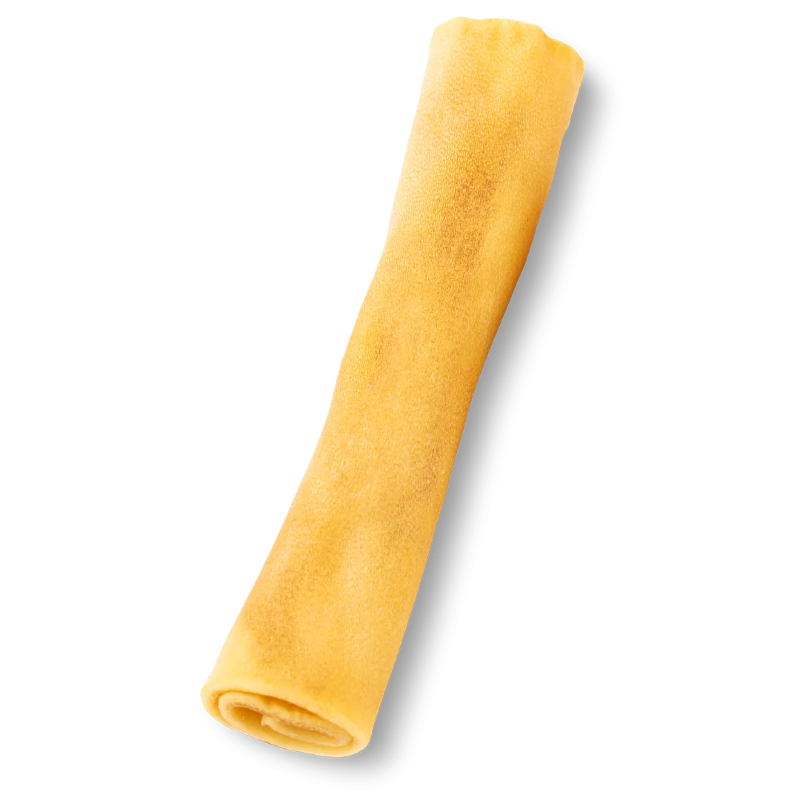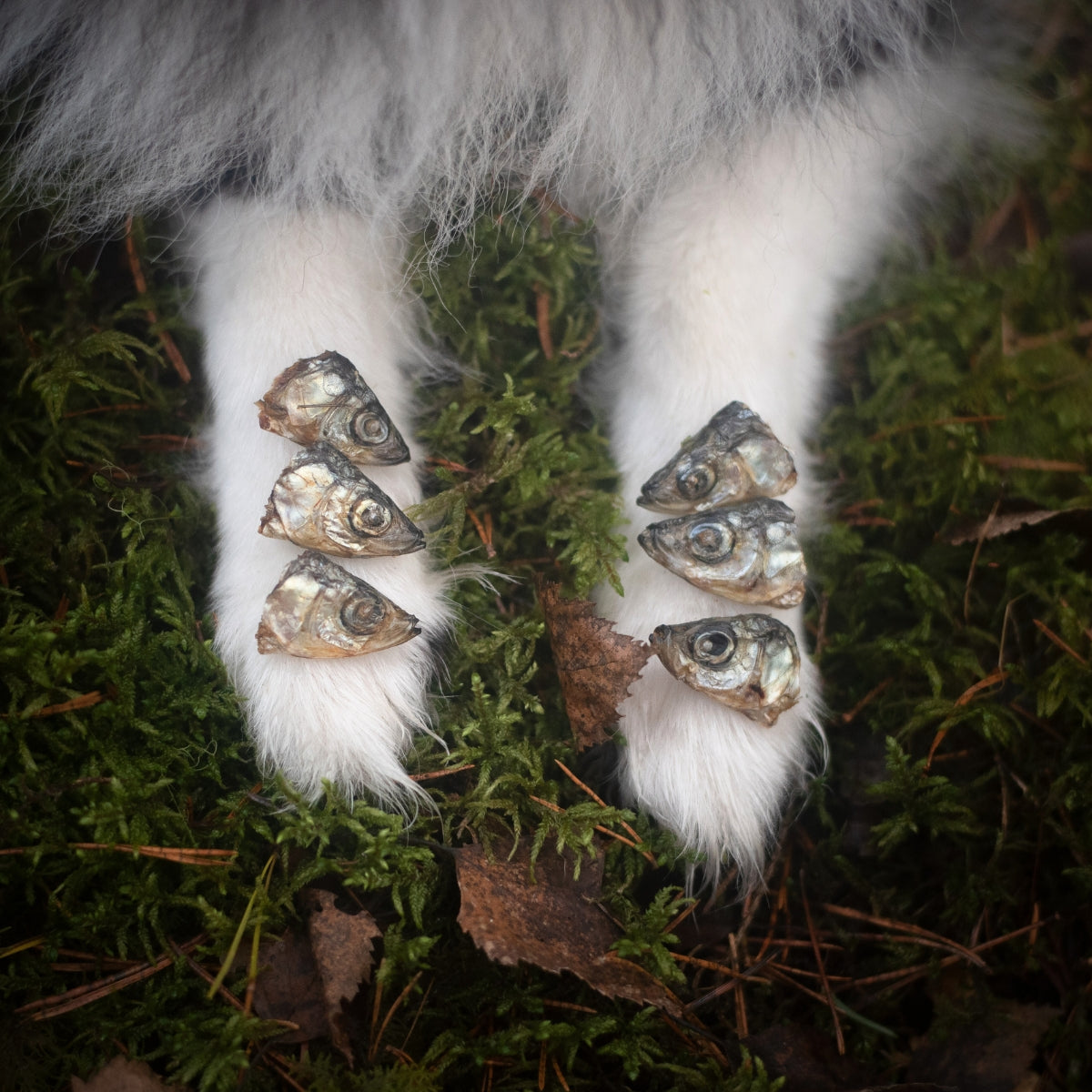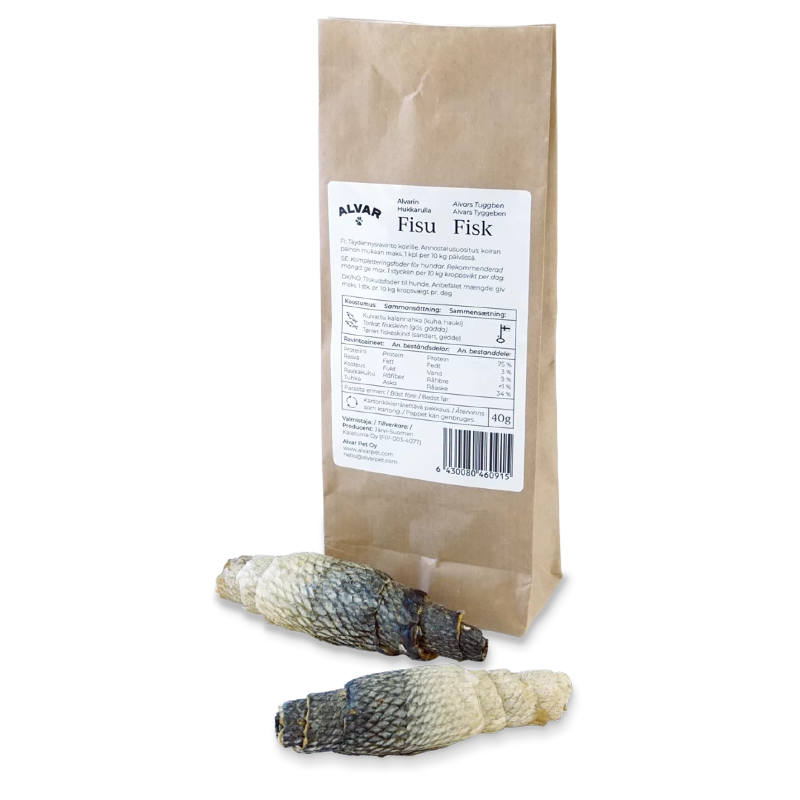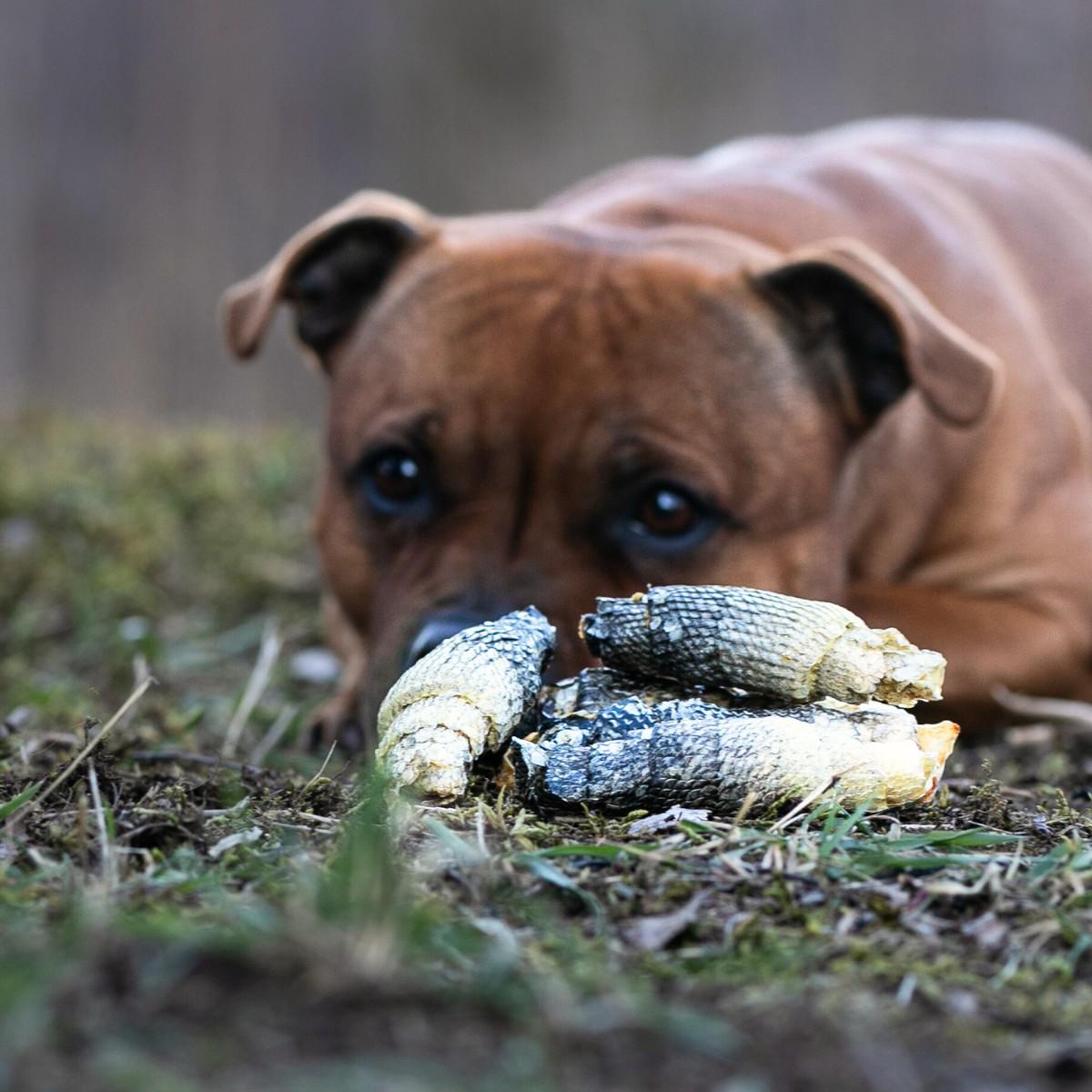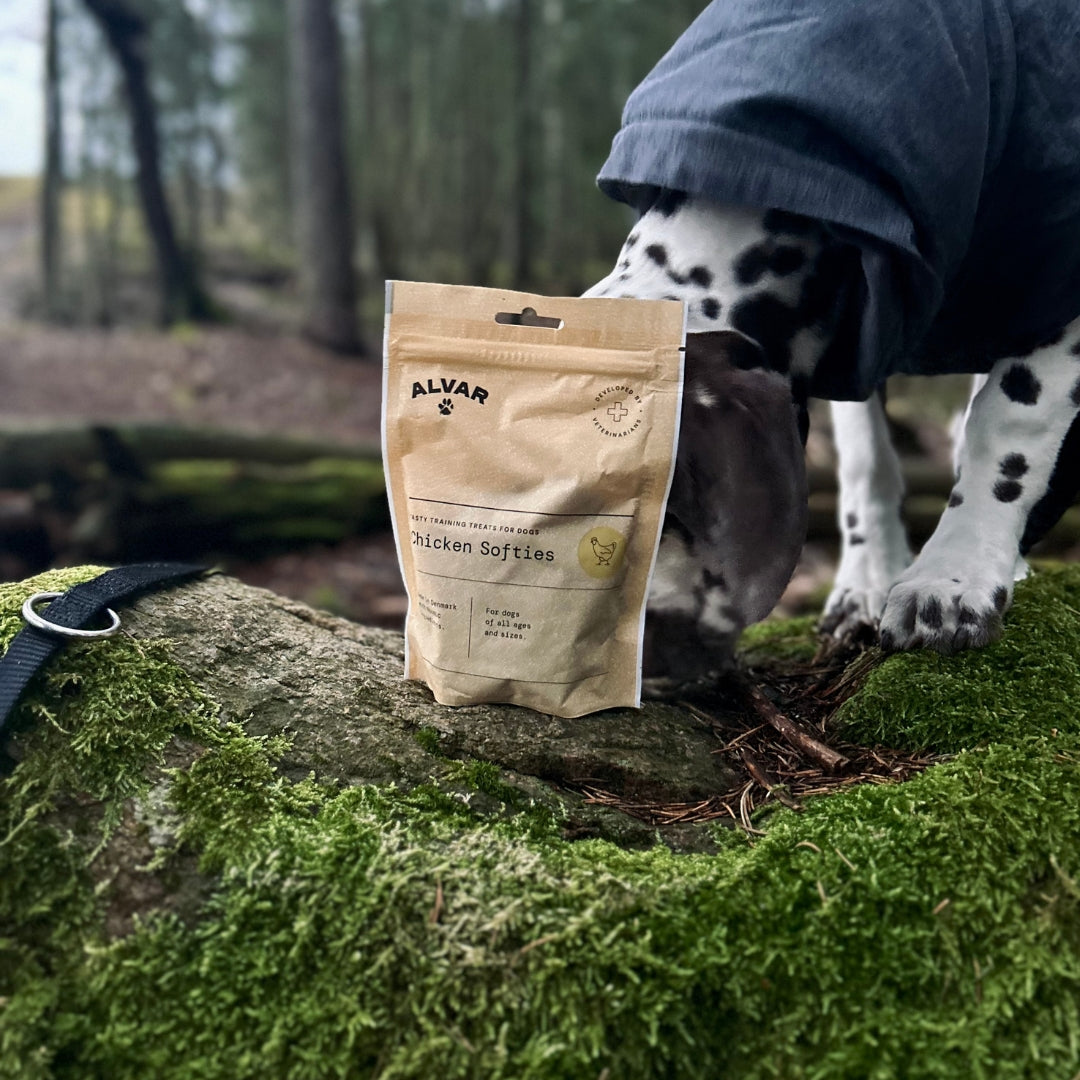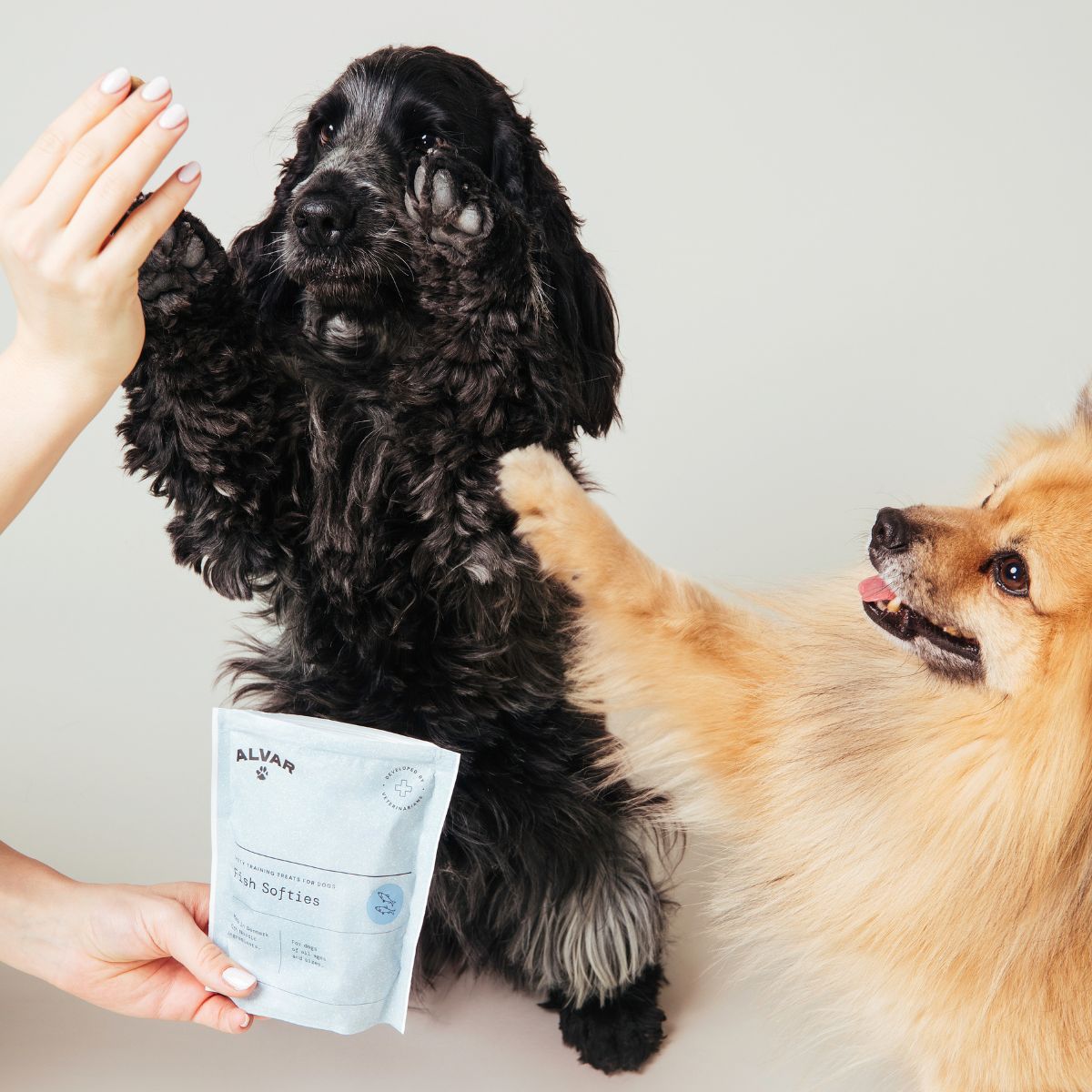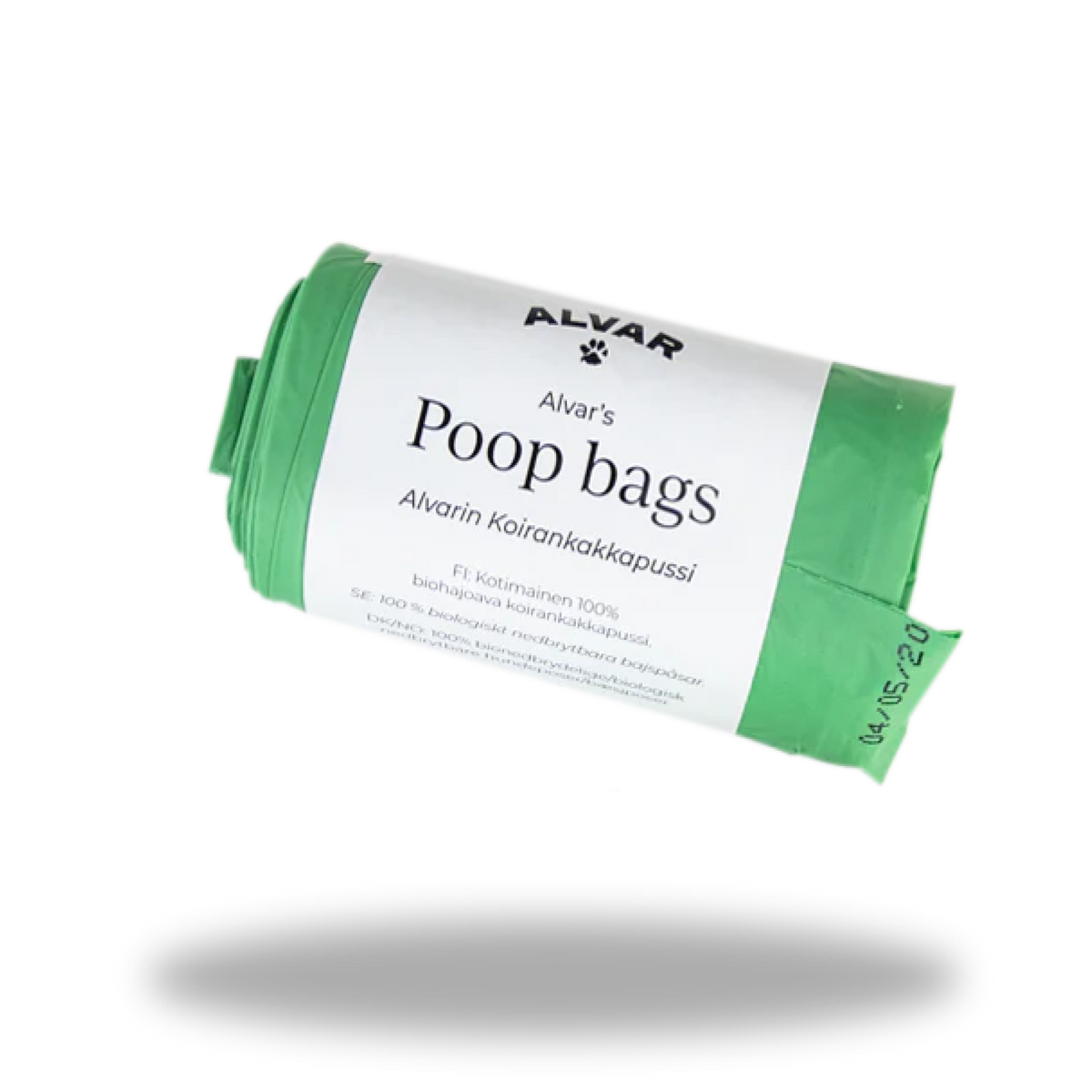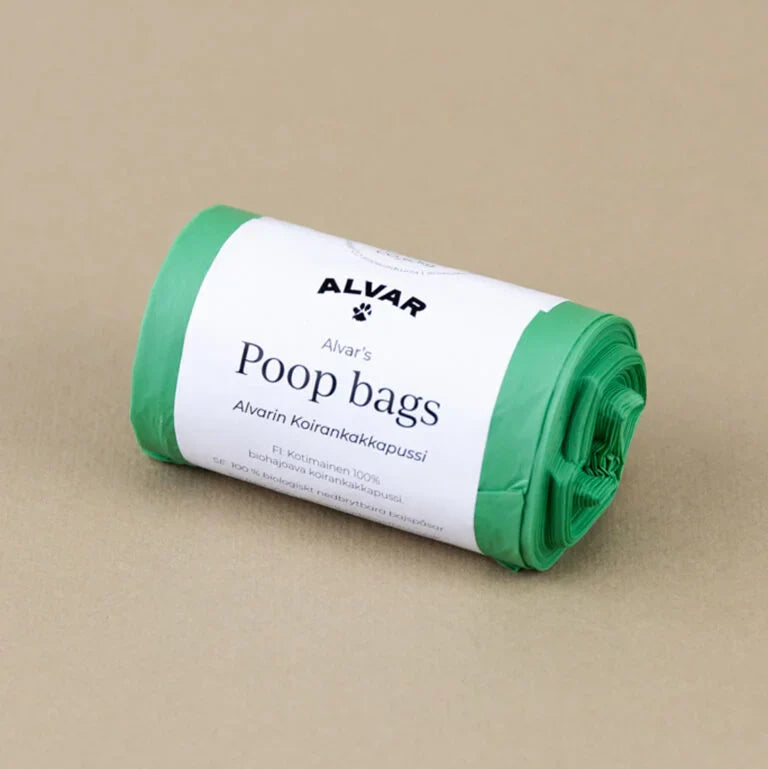Puppyhood can bring uncertainty when it comes to feeding — and this doesn't only apply to first-time dog owners. There are many opinions and perspectives on how to feed a puppy, and often scientific knowledge gets overshadowed by sheer noise. Alvar, together with veterinarian Henna, addresses 11 myths about feeding puppies.
Myth 1: Does puppy food really matter?
People’s growing interest in their own diets, ingredients, and nutritional content is also reflected in increased attention to their dog’s diet. Still, it's often asked whether a puppy really needs different food, or if it could just eat the same food as the household’s older dog.
Let's make this clear: the nutritional needs of a growing dog are not the same as those of an adult dog.
Puppies require a higher protein content, as well as the right balance of energy and minerals needed for bone development. A well-formulated complete puppy food takes these into consideration - alongside other specific needs of puppies.
“High-quality nutrition during puppyhood not only ensures balanced growth but also supports the puppy’s development in many ways. The right fibers support the formation of a healthy gut microbiota and strengthen gut-based immunity. Fatty acids, especially EPA and DHA, support the development of the puppy’s brain and nervous system,” explains Alvar Pet’s Veterinarian and Head of R&D, Henna.
“It’s definitely worth choosing a complete food for your puppy that includes EPA and DHA, for example from cold-pressed salmon oil.”
Among Alvar Pet’s dry food recipes, 3 are designed for puppies. Browse them here.
Myth 2: How many times a day to feed a puppy?
The number of times a puppy is fed per day should be adjusted according to the puppy’s growth stages.
A recently weaned puppy can be fed 3–4 times a day. “The digestive system functions better and the puppy’s energy levels remain more stable when it receives smaller meals more frequently,” Henna explains.
“A puppy has high energy needs, but its stomach is still small. Too large a portion at once can cause digestive issues.”
As your puppy grows, you can extend the time between mealtimes to a couple times a day.
Myth 3: Does the feeding guide on the food bag tell you exactly how much a puppy should eat per day?
Feeding a puppy should start with the manufacturer’s recommended feeding guide. These guidelines are based on the calculated energy and nutrient needs of a puppy and are therefore a good starting point.
A puppy’s energy requirements change as it grows. Depending on the breed, energy needs peak between 4–8 months of age, after which they gradually level off. It’s important to reassess your puppy’s food amount about once a month, depending on its stage of growth.
However, remember that feeding charts are only guidelines. The most important indicators are that the dog is alert, has a shiny coat, and maintains a healthy weight.
With Alvar Pet puppy recipes, you’ll receive a detailed feeding guide tailored to the needs of a growing puppy.
Myth 4: Is it better for a puppy to be chubby than slim?
Wouldn't it be safer for a puppy to be a bit chubby rather than too skinny? This claim often stems from the idea that extra weight might offer protection against bumps and that having some “extra nutrition” around the waist supports growth.
“If a dog is overweight as a puppy, research shows it’s more likely to develop a tendency to gain excess weight in adulthood as well. Puppyhood obesity also puts stress on the developing skeletal system and can therefore compromise balanced development,” explains Alvar’s veterinarian, Henna. “That’s why it’s recommended that a growing dog be lean rather than plump.”
It’s normal for young puppies to have a slightly bloated belly after eating. There’s no need to worry about a little round tummy on a small pup.
Myth 5: Is eating dry food boring for a puppy?
Our advice is always to keep it simple: don't teach your puppy to become a picky eater at a young age - you'll just be setting yourself up to future difficulties. If you spoil the puppy with treats and human food, a smart pup will quickly learn that if they initially refuse to eat, something new and exciting will follow. Rather keep mealtimes a regular routine, instead of turning it into a circus! This will also ensure that you're giving your puppy a balanced and complete diet.
Individual preferences influence what food is chosen and what the puppy considers delicious. High-quality ingredients are the foundation of tasty food. The temperature used during dry food production, the coating of the kibble, and proper food storage all affect how appetizing the end product is. Naturally, kibble size and texture also play a role in how the four-legged food critic judges the meal.
At Alvar, we maximize the palatability of all our dry food recipes!
Myth 6: Does puppy food need to be changed regularly?
A puppy can do perfectly well eating the same, proven food throughout its growth period. There's no essential need to switch foods. However, occasionally offering different types of textures and ingredients through the growth phase can help developing your puppy's digestive system, as it learns to adapt to different foods.
It's however important to keep in mind, that any dietary changes should always be made gradually and moderately, to avoid digestive issues caused by sudden changes.
“From a nutritional standpoint, there’s no need to vary the diet, as a complete food designed for puppies provides everything they need,” veterinarian Henna points out.
Myth 7: The more meat in the dog food, the better?
Dogs need the right amount of energy and all essential nutrients from their food, such as protein, fatty acids, and minerals. Nutritional needs are defined not by ingredients like “meat,” but by nutrients like protein and its amino acids. These nutrients can come from both plant and animal sources. It’s entirely possible to formulate a balanced, complete diet for a dog even without meat.
When discussing dog nutrition, one often hears references to the dog’s relation to the wolf, and the idea that a dog primarily needs a lot of meat in its diet. According to scientific classification, dogs do indeed belong to the order Carnivora, and both dogs and wolves are part of the Canis genus. However, since domestication, a dog’s metabolism and nutritional needs have significantly diverged from those of the wolf. One of the most notable genetic changes in dogs is their enhanced ability to digest and utilise carbohydrates in their metabolism: meaning, nutritionally dogs are omnivores, not carnivores.
Myth 8: Does dog food need to be grain-free?
Contrary to what current dog food trends might suggest, being grain-free is not inherently better, let alone a requirement, in dog food. The most important thing is that the food contains all the nutrients a dog needs in the right balance and is made from high-quality, easily digestible ingredients.
The carbohydrate that provides energy in dog food usually comes from grains or potatoes, in the form of starch, which dogs can efficiently use as an energy source. When consumed, starch breaks down and is absorbed in the intestines as glucose. Glucose, along with its short-term storage forms—glycogen in muscles and liver—is used especially for quick bursts of energy.
Every dog is an individual, and if certain grains don’t suit a particular dog for any reason, they can certainly be excluded from the diet.
In Alvar’s dry food, the carbohydrate sources include eco-friendly Nordic potatoes and oats. In our grain-free recipes, potatoes serve as the carbohydrate source (in our food guide, you can filter out grain-containing recipes to get a personalised suggestion).
Myth 9: Should puppy food be changed according to age?
When feeding a puppy, more than just age matters. The dog’s adult size determines its specific needs during the growth phase.
“Especially for the largest breeds, nutrition during puppyhood can have a significant impact on future health,” says veterinarian Henna. She adds that growth disorders often have a genetic basis, but nutrition can help support balanced development.
A puppy’s adult size determines its energy needs. Henna recommends feeding puppy food until the end of the growth period. Small dogs reach adult size at around ten months, while the largest breeds may not be fully grown until nearly two years old. Muscle development continues even beyond that.
Myth 10: When should puppy food be switched to adult dog food?
You can switch to adult dog food once the puppy has reached its full skeletal growth and no longer needs the extra energy for growing. Muscle development, however, often continues beyond this point.
The transition to adult food is a good opportunity to reassess the young dog’s nutritional needs and choose the most suitable food to support its individual requirements. For example, high-energy puppy food might still be appropriate for small, active dogs even as they get older, as long as the portion size is adjusted according to their unique activity levels and needs at the end of their growth phase.
Wondering how to make the switch from puppy to adult food? You can book a free nutritional consultation with our Veterinarian Henna. You can also use our food guide to get a tailored meal plan for your young dog!
Myth 11: How many treats can you give a puppy?
According to recommendations, added food and treats should make up no more than about 10% of a puppy’s daily energy intake. If you stick to this guideline, there’s usually no need to worry about nutritional imbalances. You can also use part of the puppy’s daily kibble portion as training treats.
If you're looking for healthy and natural treats to train, reward and pamper your puppy with, check out the Alvar Pet treats that are suitable for puppies.
Want to learn more about feeding a puppy?
Alvar’s Veterinarian Henna has written a comprehensive article on puppy nutrition. The article covers the basics of feeding a puppy, making it easier for new dog owners to make informed choices about their new family member’s diet. All the advice is based on extensive scientific research and up to date official nutritional guidelines – just like the Alvar Pet puppy foods.


